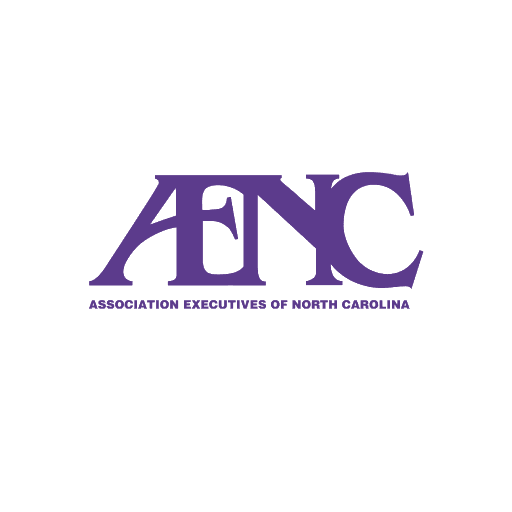Common questions about audio visual charlotte nc every business owner should know
Understanding the Addition of Audio Visual Modern technology in Today's Educational Environments
The assimilation of audio-visual modern technology in academic settings has actually transformed the training and learning procedure. Educators currently have access to devices that satisfy different learning styles, improving pupil involvement and cooperation. Nevertheless, the unification of these innovations presents both possibilities and challenges. Understanding how to effectively carry out these devices is crucial. What approaches can teachers employ to make best use of the benefits of audio-visual modern technology in their classrooms?
The Evolution of Audio-Visual Modern Technology in Education And Learning
As academic needs evolved over the decades, audio-visual innovation underwent significant makeovers that reshaped the understanding environment. At first, tools such as movie projectors and slide shows were the key ways of integrating visual components right into classrooms. These very early modern technologies supplied educators with the capacity to present info dynamically, yet they were limited in access and interactivity.
With the development of videotape recorder in the 1970s, classrooms started to integrate recorded lessons, widening the scope of academic resources. The introduction of individual computer systems in the 1980s more transformed this landscape, permitting the development of multimedia presentations and interactive understanding experiences.
The rise of the internet in the 1990s marked a zero hour, enabling real-time access to a wide range of audio-visual products. Today, electronic devices such as interactive white boards and online learning platforms proceed to improve the academic experience, cultivating engagement and partnership amongst learners.
Advantages of Audio-Visual Equipment for Diverse Knowing Styles
Audio-visual tools play an important function in accommodating varied learning designs by boosting aesthetic learning and boosting acoustic interaction. By integrating images, videos, and sound, these innovations produce an even more inclusive educational setting. This diverse strategy permits instructors to address the different preferences and needs of pupils successfully.
Enhancing Visual Learning
Interaction in the discovering procedure is substantially boosted via the use of audio-visual devices, catering to numerous discovering styles. These tools, such as video clips, infographics, and interactive discussions, provide visual stimulations that aid understanding and retention. Aesthetic students, specifically, benefit from the incorporation of pictures and animations, which can simplify complex principles and improve understanding. In addition, audio-visual sources can illustrate real-world applications, making finding out more pertinent and engaging. By integrating color, movement, and audio, educators can develop a dynamic learning setting that captures pupils' interest and cultivates deeper cognitive links. Inevitably, the strategic use audio-visual technology not just supports aesthetic knowing yet likewise improves the general instructional experience for varied students.
Improving Auditory Involvement
A considerable benefit of incorporating audio-visual tools in education is their ability to boost auditory interaction among pupils. These tools, which encompass multimedia presentations, podcasts, and interactive sound components, accommodate different discovering designs, specifically benefiting auditory students (audio visual charlotte nc). By integrating audio and narration, instructors can create immersive experiences that catch trainees' interest and enhance comprehension. This engagement is crucial, as it promotes a much deeper understanding of the material and advertises retention. In addition, audio-visual devices can promote collective discovering settings, motivating pupils to join discussions and share their insights. Inevitably, the unification of audio-visual innovation not only supports acoustic involvement however additionally improves the general academic experience, making finding out much more vibrant and efficient for all pupils
Enhancing Interaction With Interactive Knowing

Gamification elements, such as quizzes and simulations, can boost motivation and retention, making learning extra satisfying and reliable. These approaches not only stimulate cognitive involvement however also satisfy diverse knowing styles, making certain that all pupils can participate meaningfully. Therefore, interactive learning environments cultivate a sense of neighborhood and belonging, inevitably causing improved academic results. With the assimilation of audio aesthetic modern technology, educators can transform conventional classrooms into vibrant spaces where trainees thrive and actively form their instructional journeys.
Connecting Concept and Exercise With Multimedia Resources
Multimedia sources act as an important web link in between theoretical principles and practical application in educational settings. By boosting interaction, assisting in joint learning experiences, and sustaining diverse knowing styles, these tools produce an extra comprehensive and vibrant learning setting - audio visual charlotte nc. This method not only fosters deeper understanding however also prepares pupils for real-world obstacles

Enhancing Involvement Through Multimedia
Involvement in academic settings substantially boosts when teachers integrate multimedia resources right into their teaching techniques. The usage of video clips, podcasts, and interactive discussions improves the finding out experience, permitting pupils to connect with the material on several levels. Multimedia resources cater to various discovering styles, supplying aesthetic, acoustic, and kinesthetic stimuli that can hold students' attention better than traditional lecture methods. Additionally, these resources can simplify intricate principles, making them a lot more accessible and remarkable. By incorporating multimedia, instructors can develop a dynamic class environment that cultivates inquisitiveness and inspires learners. Eventually, the tactical use of audio-visual technology serves to bridge the void in between academic expertise and functional application, enriching the instructional experience for both teachers and pupils.
Assisting In Collaborative Learning Knowledge
Countless studies suggest that collaborative knowing experiences markedly enhance trainee end results when integrated with multimedia resources. Multimedia tools facilitate interaction among pupils, enabling them to take part in problem-solving and crucial thinking collectively. By using video conferencing, collective systems, and interactive discussions, teachers produce environments for synergy and shared learning. These technologies make it possible for trainees to connect their ideas effectively and get immediate responses, cultivating a much deeper understanding of the topic. Furthermore, multimedia sources can present complex concepts in even more digestible layouts, promoting conversation and cooperation. Therefore, the mix of collective understanding and audio-visual modern technology not just enriches the instructional experience but also prepares pupils for real-world teamwork dynamics, stressing the importance of teamwork and collective expertise construction.
Sustaining Diverse Learning Styles
While traditional teaching techniques frequently deal with a restricted range of discovering choices, the assimilation of audio-visual technology offers a more comprehensive strategy to education. By utilizing multimedia sources such as video clips, interactive simulations, and digital discussions, teachers can address numerous discovering designs, including aesthetic, auditory, and kinesthetic. This flexibility enables set apart instruction, enabling trainees to engage with content in manner ins which reverberate with their private choices. Additionally, audio-visual tools can facilitate much deeper understanding by supplying numerous representations of complex concepts. Consequently, students that might fight with standard approaches can find alternative paths to success, promoting a more fair knowing setting that sustains scholastic achievement for all students.
Challenges in Executing Audio-Visual Technology
Audio-visual modern technology holds excellent guarantee for improving instructional experiences, its execution frequently runs into significant obstacles. One main worry is the monetary burden connected with purchasing and preserving such equipment, which can stress spending plans, especially in underfunded institutions. In addition, poor training for educators can prevent reliable integration, leaving them ill-prepared to utilize the technology completely. Technical issues, such as software application breakdowns and compatibility troubles, might likewise interrupt lessons and discourage both instructors and students. Differing levels of trainee accessibility to modern technology outside the classroom can create variations in learning possibilities. The potential for over-reliance on technology may detract from important mentor methods, eventually limiting the instructional experience. Resolving these difficulties calls for a comprehensive strategy, including appropriate financing, professional growth, and fair accessibility to resources, to ensure that audio-visual innovation can be leveraged effectively in today's academic setups.
Ideal Practices for Integrating Technology in the Classroom

Furthermore, cultivating an interactive atmosphere through collaborative tools motivates pupil involvement and participation. Utilizing varied audio-visual sources deals with different learning designs, accommodating aesthetic, acoustic, and kinesthetic learners. Routinely reviewing the effect of modern technology on pupil knowing assists educators refine their techniques and adjust to transforming requirements. Lastly, including pupils in the option of technology advertises ownership and motivation. By sticking to these finest practices, educators can create a vibrant class ambience that successfully incorporates modern technology and boosts the educational experience for all students.
The Future of Audio-Visual Modern Technology in Education And Learning
As class increasingly embrace modern technology, the landscape of audio-visual devices in education proceeds to progress (audio visual charlotte nc). Future developments are expected to concentrate on greater interactivity and customization, enabling teachers to customize finding out experiences to individual pupil requirements. Technologies such as increased reality (AR) and virtual fact (VIRTUAL REALITY) will likely provide immersive knowing environments, boosting student engagement and understanding
Artificial intelligence (AI) is poised to play a significant duty in audio-visual innovation by using real-time responses and adaptive discovering paths. This combination may help teachers recognize and deal with trainee difficulties much more effectively. Cloud-based platforms will promote less complicated access to resources and collaboration amongst trainees and instructors, despite place.
In addition to these technical breakthroughs, professional development for teachers will be essential, ensuring they are geared up to use these devices successfully. Generally, the future of audio-visual technology in education and learning promises to produce more dynamic, inclusive, and impactful learning experiences.
Often Asked Inquiries
Exactly How Can Teachers Pick the Right Audio-Visual Devices for Their Class?
Picking proper audio-visual tools needs instructors to evaluate their academic objectives, think about trainee requirements, review available technology, and look for suggestions from peers or professionals, making certain devices efficiently enhance discovering and engagement within their certain class atmosphere.
What Budget Considerations Are There for Applying Audio-Visual Innovation?
Spending plan factors to consider for executing audio-visual modern technology include initial acquisition expenses, maintenance costs, training for staff, and potential software application licensing fees. Furthermore, long-term financial investment in updates and substitutes ought to likewise be factored into monetary preparation.
Are There Certain Training Resources for Teachers on Audio-Visual Tools?
Numerous establishments offer training resources for teachers on audio-visual tools, consisting of online training courses, workshops, read more and educational overviews. These resources aim to enhance educators' skills and confidence in efficiently incorporating technology right into their mentor methods.
Just how Do We Measure the Efficiency of Audio-Visual Innovation in Understanding?
Gauging the performance of audio-visual innovation in learning includes evaluating student engagement, comprehension, retention rates, and total scholastic efficiency. Studies, analyses, and observational studies can provide valuable insights into its influence on academic results.
What Are Usual Misconceptions Regarding Audio-Visual Innovation in Education And Learning?
Typical false impressions regarding audio-visual modern technology in education consist of the idea that it ensures interaction and discovering outcomes, in addition to the assumption that all trainees profit just as, ignoring individual learning choices and needs.